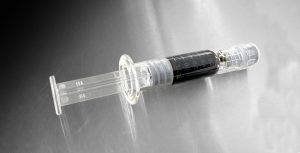
Empowering Smart Grids and Energy Management: The Crucial Role of Current Transducers
As the world advances towards smarter and more sustainable energy solutions, the role of current transducers in shaping the landscape of smart grids and energy management systems becomes increasingly prominent. These intricate devices play a pivotal role in ensuring the efficiency, reliability, and seamless operation of modern power networks. Delve into the significance of current transducers in the context of smart grids and energy management, exploring their contributions to a greener and more interconnected energy future.
current transducer play an integral role in the evolution of smart grids and energy management systems. Their ability to accurately monitor current levels, detect faults, optimize energy distribution, and facilitate the integration of renewables empowers utilities to deliver reliable, sustainable, and efficient energy solutions.
1. Accurate Monitoring and Measurement:
Current transducers are the eyes that constantly monitor the flow of electric current within the grid. Their ability to accurately measure current levels, even under varying conditions, provides valuable data for load management, power quality analysis, and grid optimization.
2. Fault Detection and Protection:
Smart grids require not only efficient power distribution but also the ability to identify and respond to faults swiftly. Current transducers play a critical role in detecting anomalies such as short circuits, overloads, and ground faults by continuously monitoring current variations. When combined with automated control systems, these transducers enable quick isolation of faulty sections, minimizing downtime and preventing potential blackouts.
3. Energy Efficiency and Demand Response:
Efficient energy management is a cornerstone of modern power systems. Current transducers contribute by providing insights into energy consumption patterns. This data is vital for implementing demand response strategies, where energy consumption can be adjusted during peak demand periods to alleviate strain on the grid. With current transducers facilitating accurate measurement, utilities can incentivize consumers to reduce consumption during high-demand periods.

4. Integration with Renewable Energy Sources:
The rise of renewable energy sources like solar and wind presents both opportunities and challenges for power grids. Current transducers enable seamless integration of these intermittent energy sources by precisely measuring the inflow of energy from sources like solar panels or wind turbines. This ensures that the grid remains stable and balanced while harnessing the benefits of clean energy.
5. Data-Driven Decision-Making:
In the age of digitization, data is invaluable. Current transducers contribute by supplying real-time data to energy management systems and control centers. This data enables grid operators to make proactive decisions, optimize load distribution, predict equipment maintenance needs, and enhance overall grid performance.
6. Grid Resilience and Future-Proofing:
The unpredictable nature of energy demand and supply requires power networks to be adaptable and resilient. Current transducers aid in building robust grids by providing insights into load patterns and potential stress points. This information guides infrastructure upgrades, maintenance schedules, and the incorporation of advanced technologies to future-proof the grid.


















